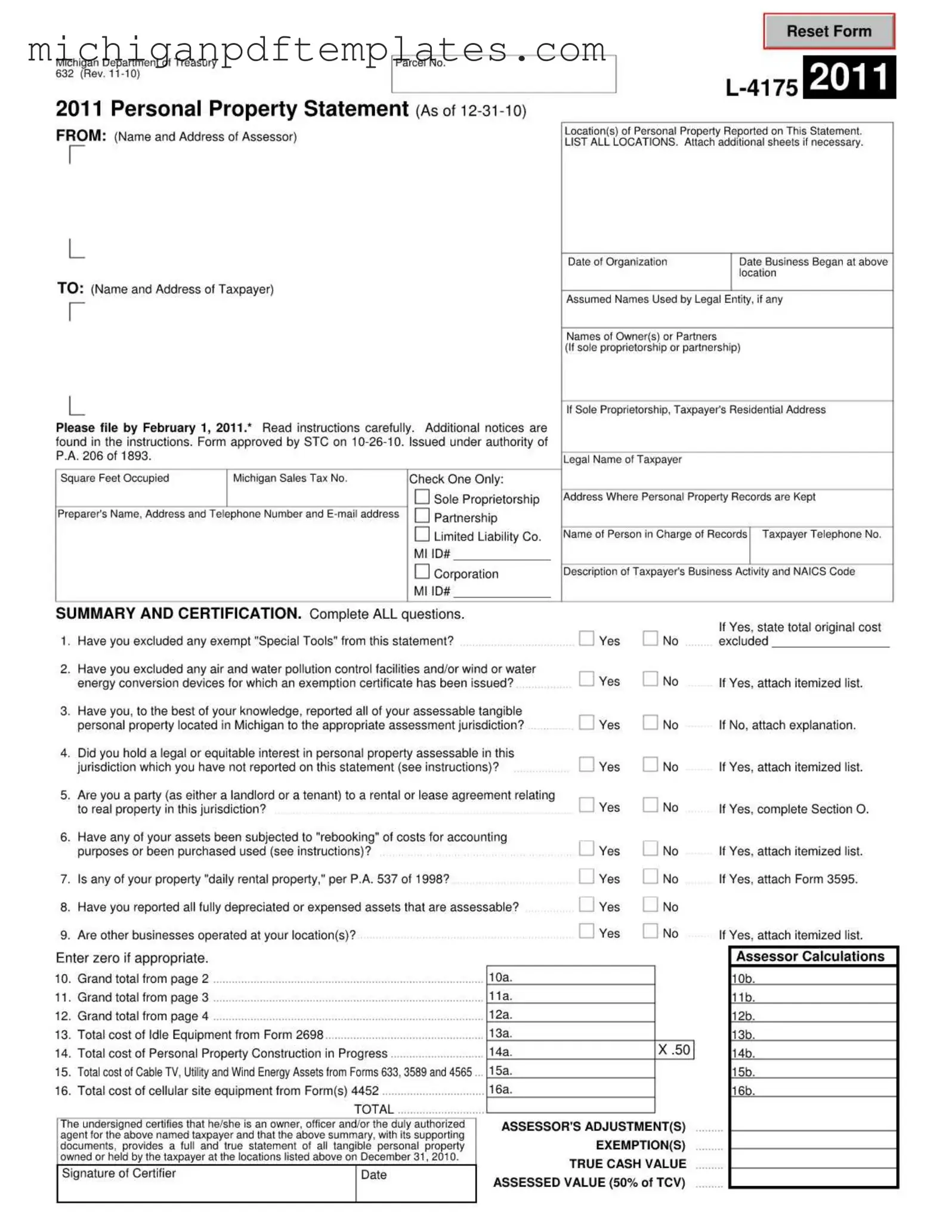The Michigan 632 form, officially known as the Personal Property Statement, plays a crucial role in the assessment of tangible personal property for taxation purposes in the state of Michigan. This form must be completed and filed by businesses and individuals who own assessable personal property within the state. It gathers essential information about the taxpayer, including their name, address, and business activity, as well as the locations where personal property is held. The form requires detailed reporting of various categories of personal property, including standard tooling, leased equipment, and qualified personal property, among others. Taxpayers must also certify that they have accurately reported all assessable items and disclose any exemptions that may apply, such as special tools or pollution control facilities. A key deadline for filing this form is February 1st of each year, which emphasizes the importance of timely compliance to avoid potential penalties. Understanding the intricacies of the Michigan 632 form is vital for ensuring accurate reporting and maintaining compliance with state tax laws.
